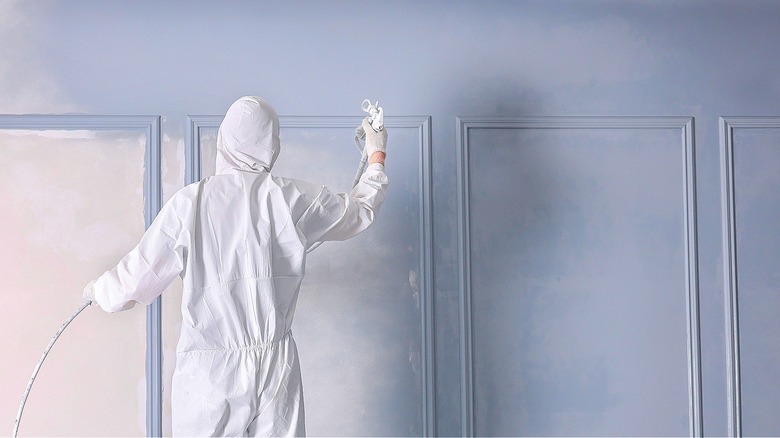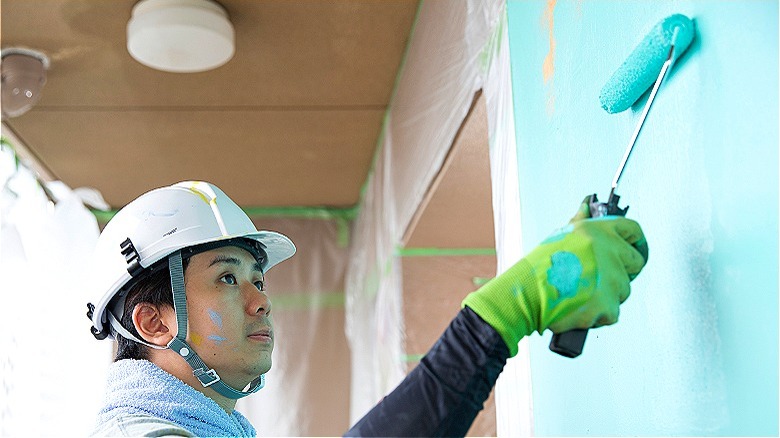What Is Back Rolling And Why You Should Use It Next Time You Paint
We may receive a commission on purchases made from links.
Spray painting! We're all familiar with its ease and speed as it transforms dull spaces with a swift press of the finger. Paint, seemingly suspended in mid-air before landing on surfaces with the grace of a synchronized diving team, promises beauty and uniformity. The reality, however, often paints a different picture when priming rough or porous surfaces. Here, paint deceptively bridges over voids and holes, forging a delicate film that eventually cracks and peels away under subtle temperature fluctuations. Enter the back-rolling technique for painting: Your ally in vanquishing this chaos.
So, what is back rolling? It's an artful combination of paint spraying and roller work, where a nap synthetic roller follows the trail of the sprayer to penetrate the paint deeper into the surface crevices. You start from the top of the wall and work your way down, rinsing and repeating until you cover the entire surface. Traditionally, it's a two-person job — one managing the sprayer and the other gliding the roller over the freshly applied paint. However, modern marvels like the GRACO 24U172 Spray Roller on Amazon relieve us from choreographing this painting ballet by allowing one to spray and back roll single-handedly.
But is it necessary to back roll? This technique is an excellent option for rough or porous substrates. However, it might cause a headache rather than help when deployed on non-porous mediums like metal. Now that you know the "what" and "how," let's examine why you should consider back rolling for your next painting project.
The benefits of back rolling when painting
Inconsistencies can dampen the whole aesthetic of a fresh coat of paint, particularly on a textured substrate like old wood or masonry surfaces like cement, stucco, and cinder block. The magic of back rolling unfolds here as each stroke of the roller distributes the paint, perfecting the layer of paint into a visual harmony. Next, picture yourself painting a wall with abundant textural features. Those surface irregularities might leave you with disappointing results and paint clinging only superficially. Back rolling pushes the paint deeper into the substrate, covering the gaps and maximizing adhesion. That way, you get a paint job that bravely weathers the test of time.
Furthermore, back rolling conquers one of the age-old mistakes when painting: streaky results. Hard-to-reach spots may leave your paint sprayer feeling inadequate, so you have no choice but to rely on the good old-fashioned paintbrush. Yet, after swiping and swishing, you might find yourself facing a sea of brush strokes. Back rolling swoops in to save your masterpiece from the brink of chaos, smoothing out those imperfections and restoring finesse to your work. The cherry on top is refined light-scattering. Here's the thing with a freshly spray-painted wall: it can look mesmerizingly smooth at first, but that very smoothness can over-reflect light, laying bare minor surface variations. The ingenious technique of back rolling can turn that gleam into a subtle glow that illuminates the wall's beauty instead of magnifying its flaws.

